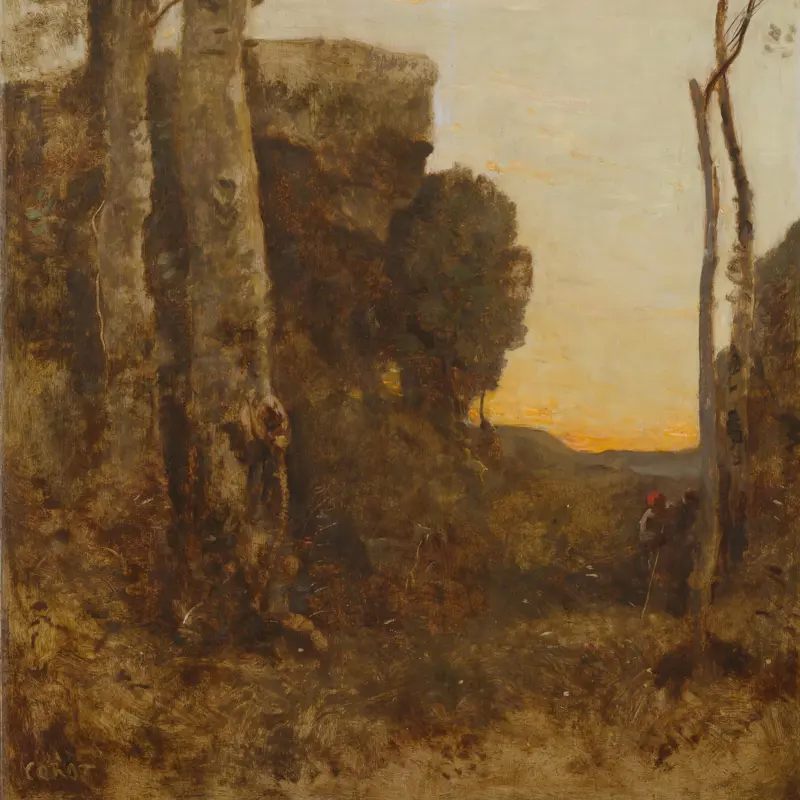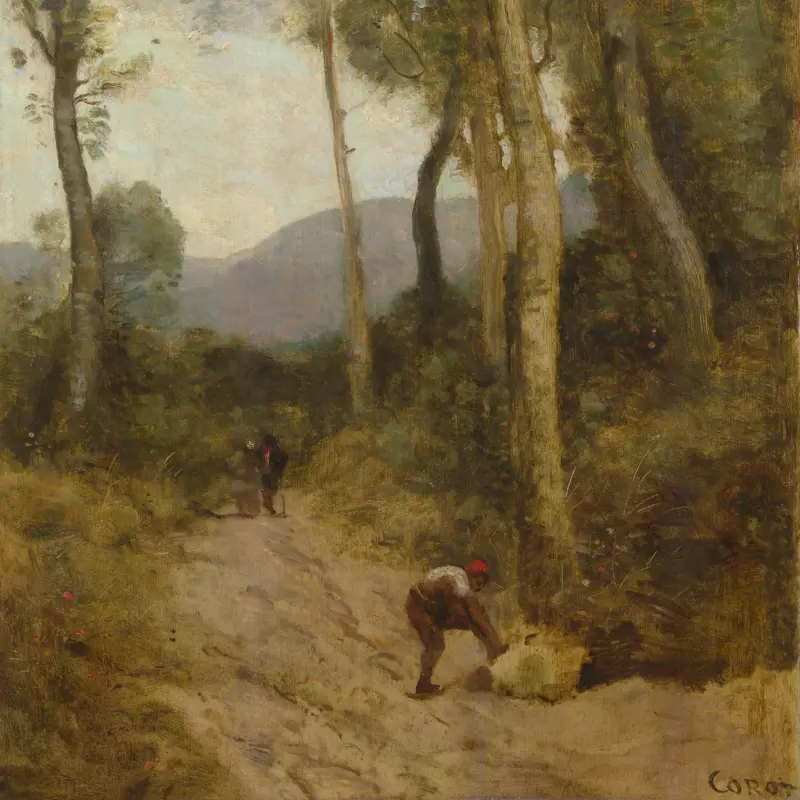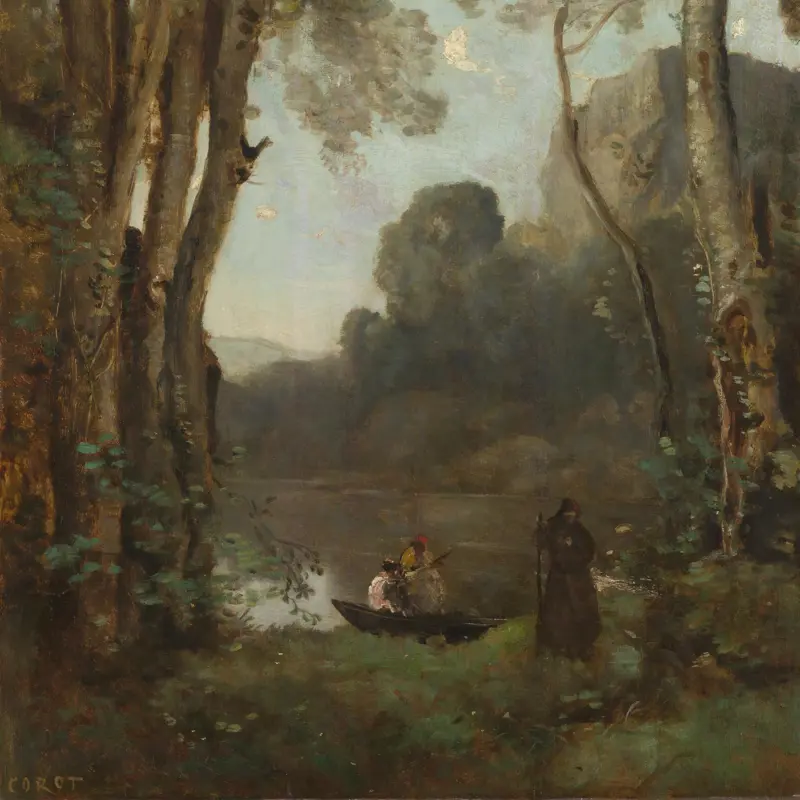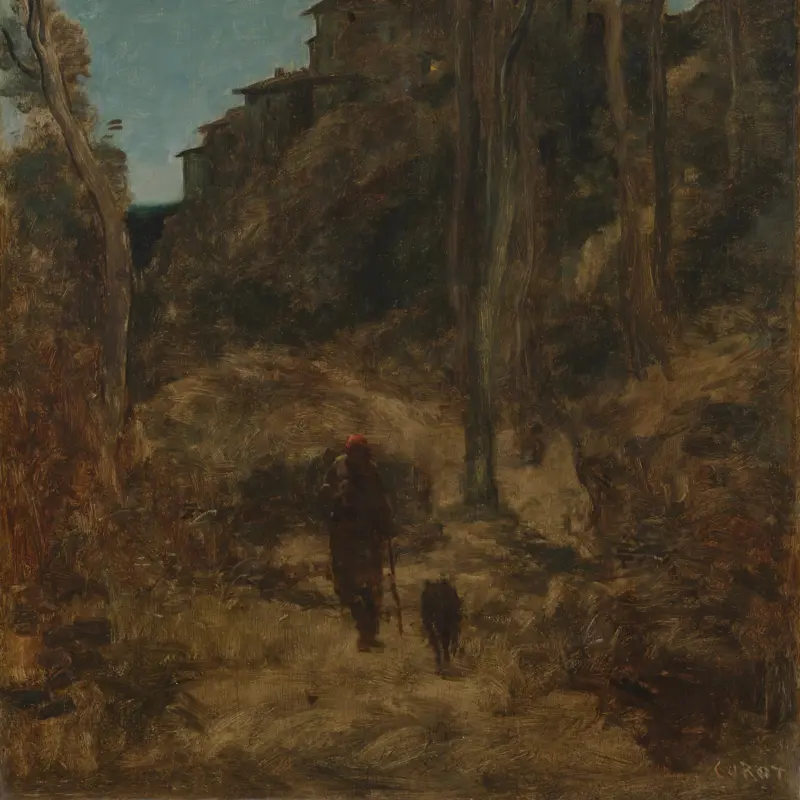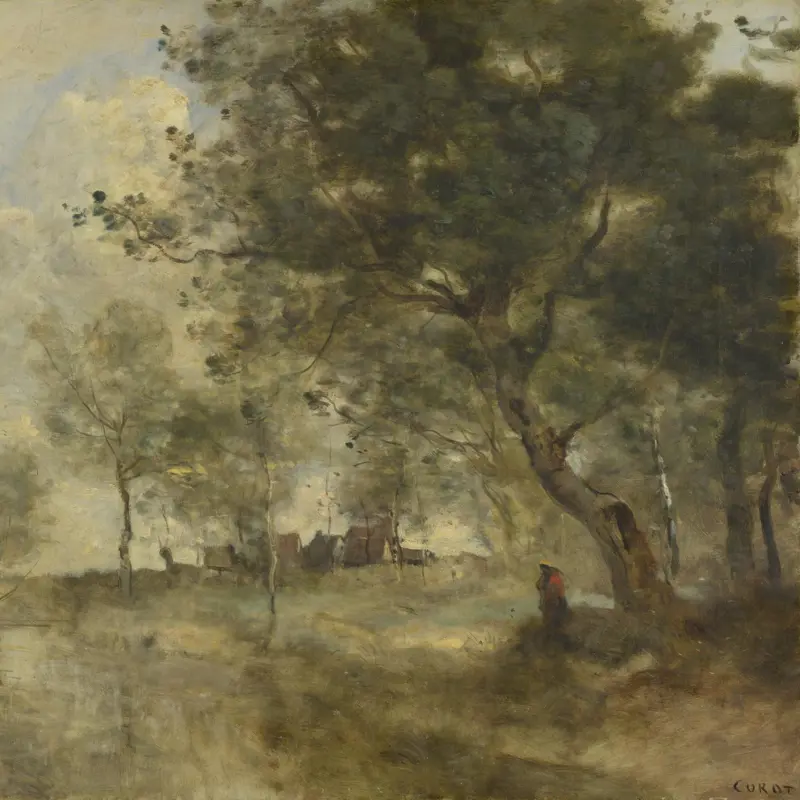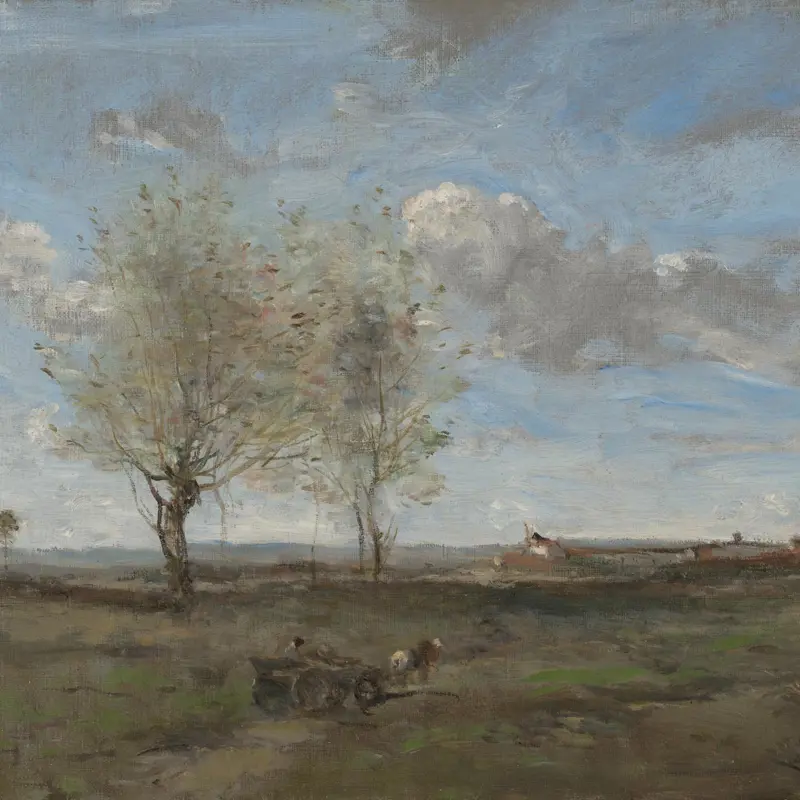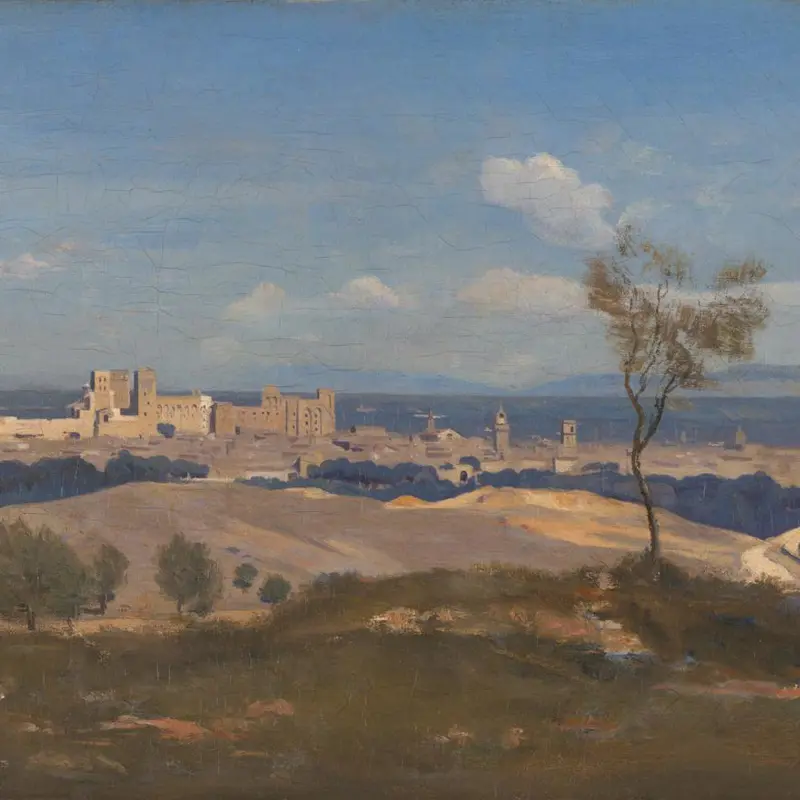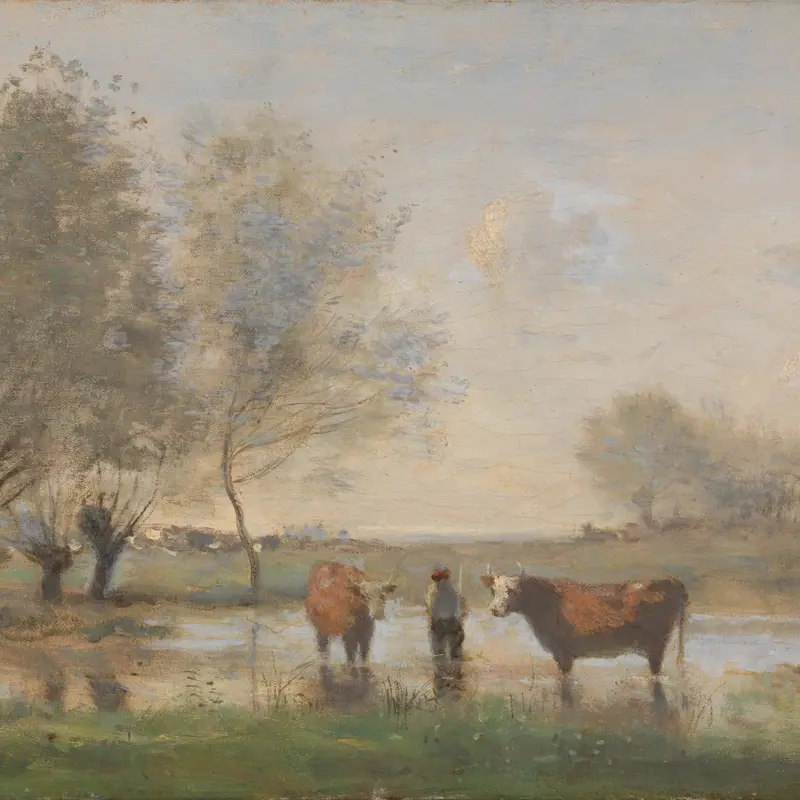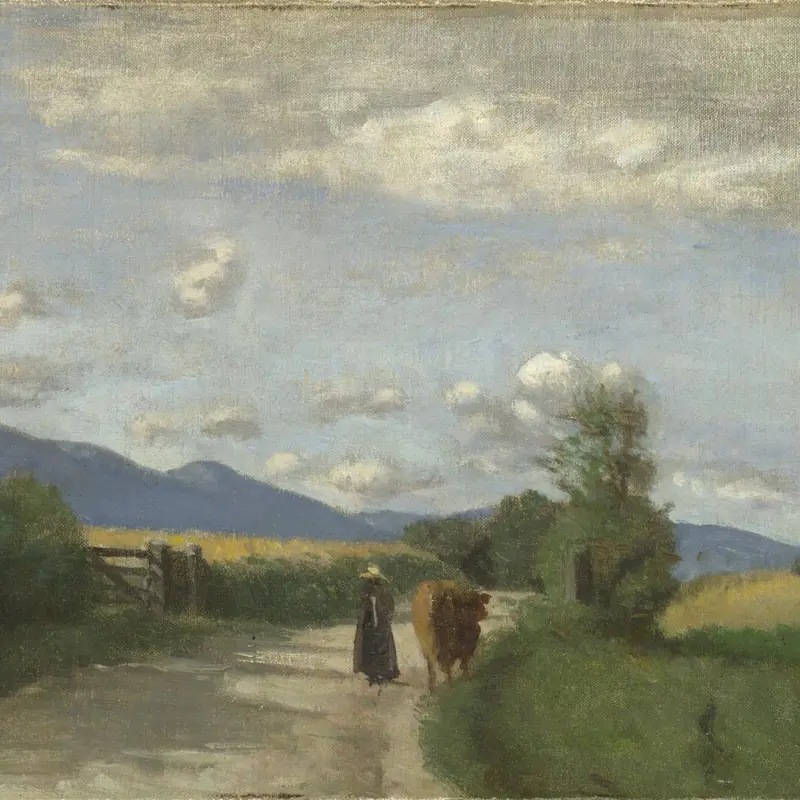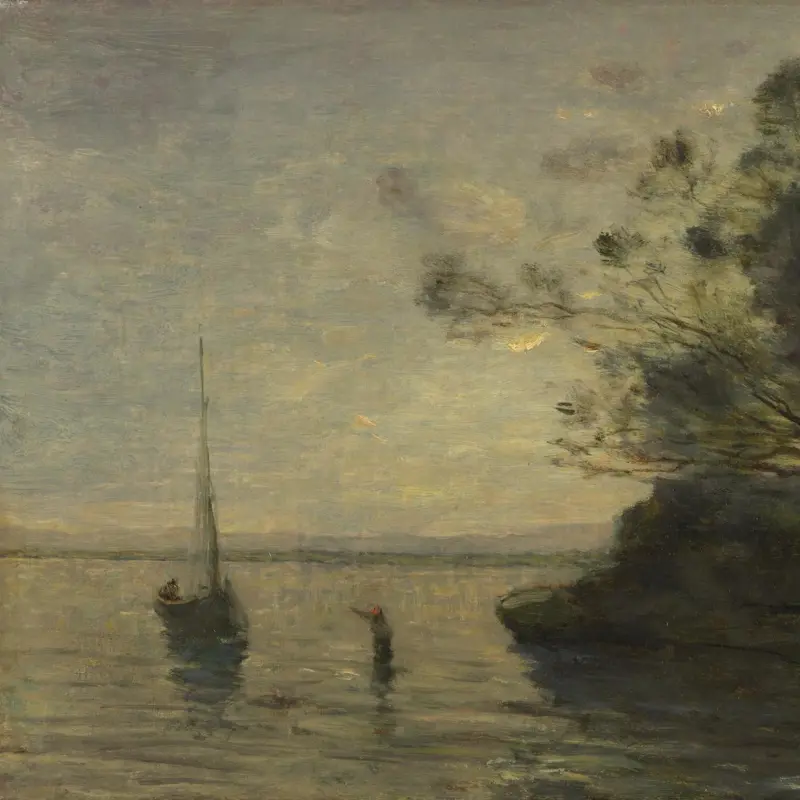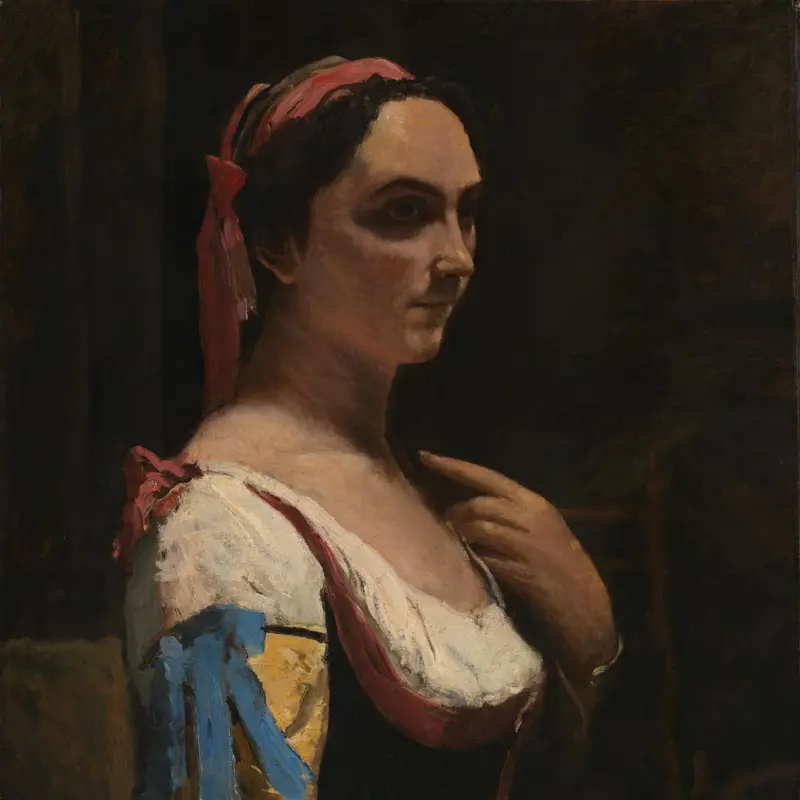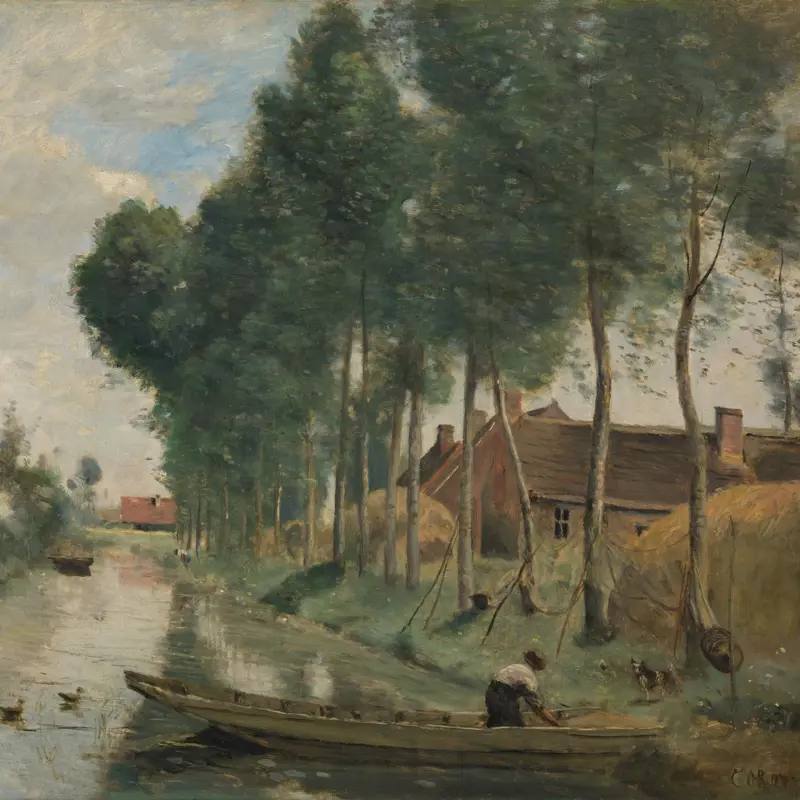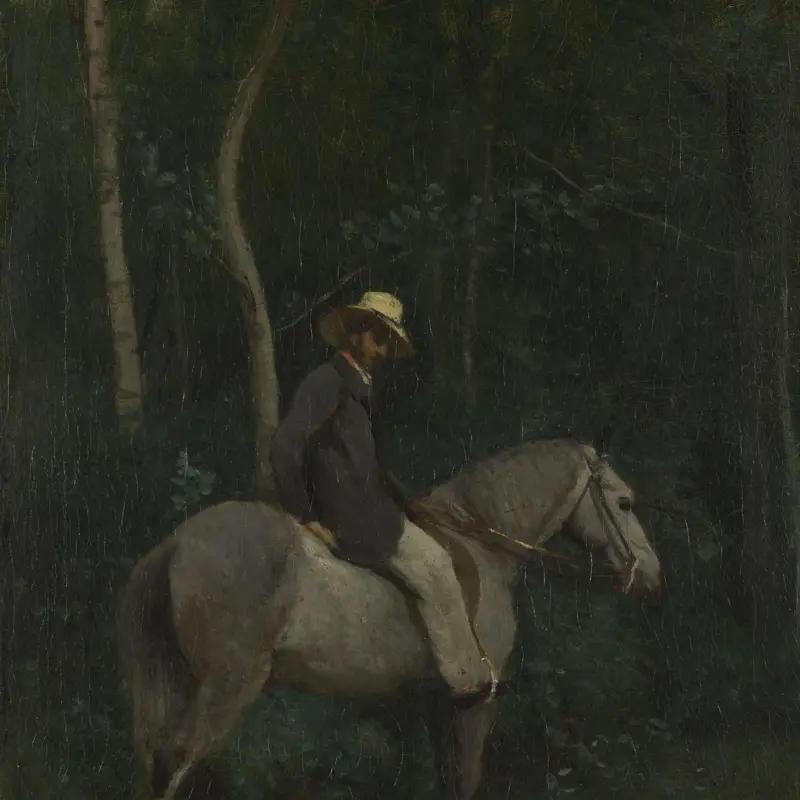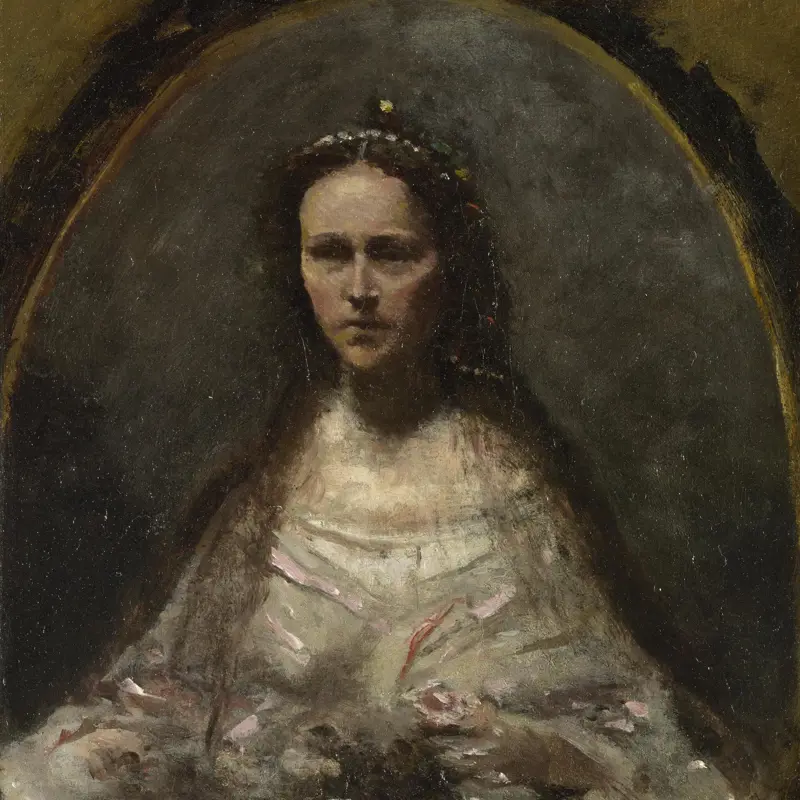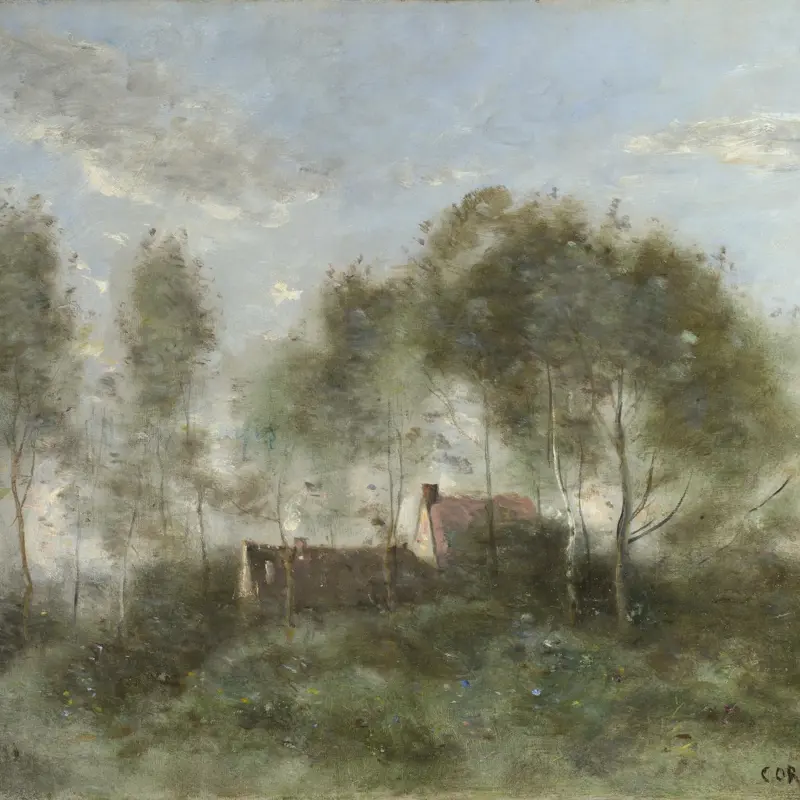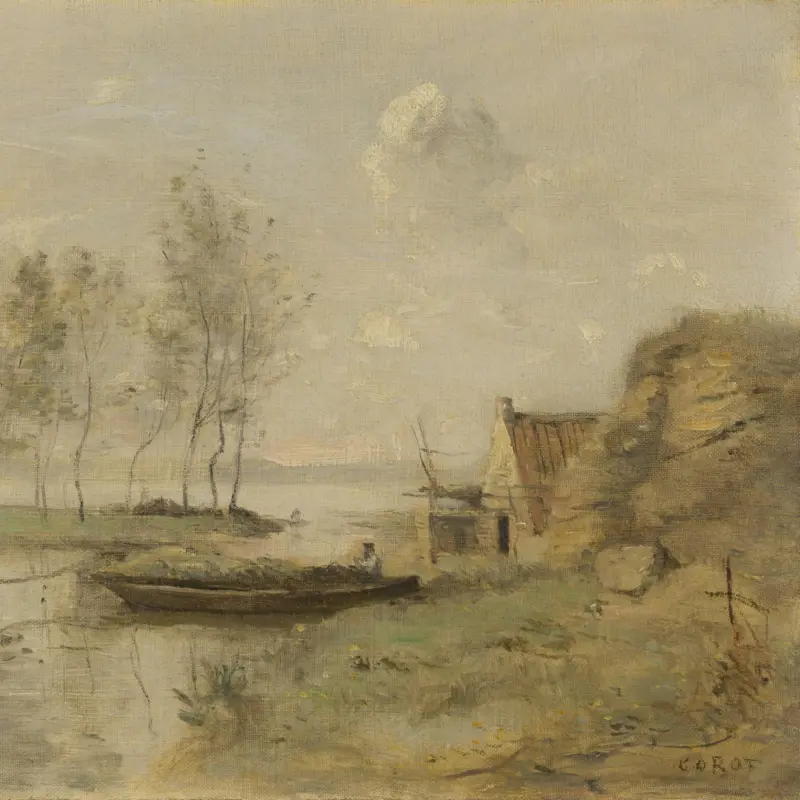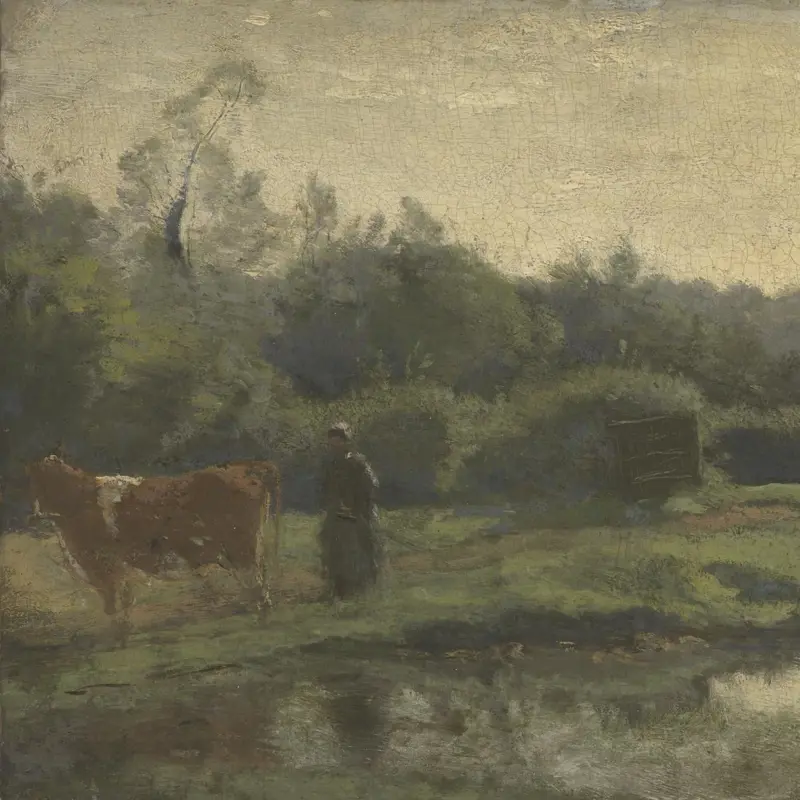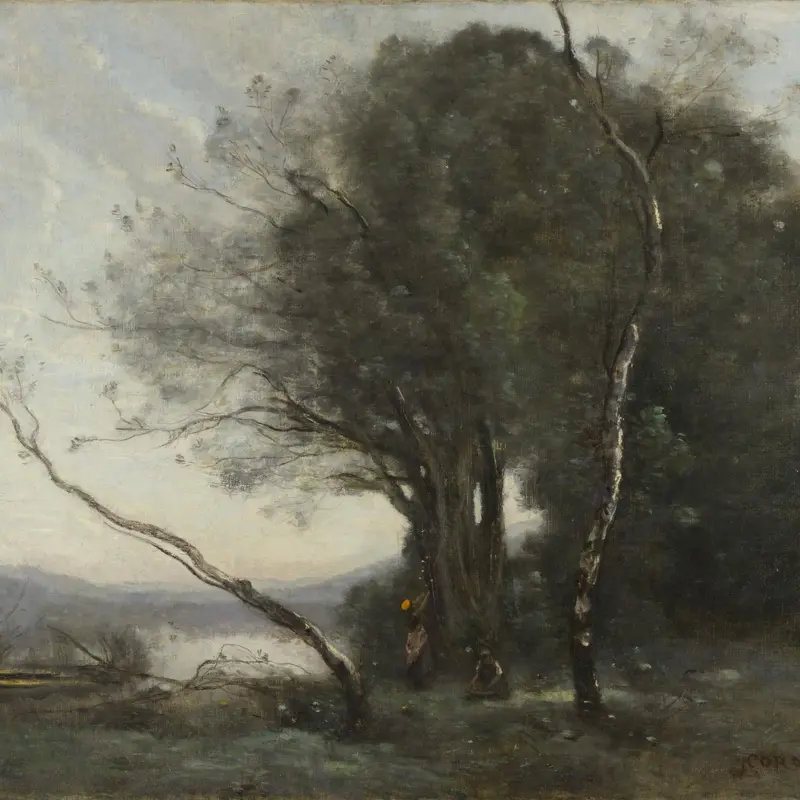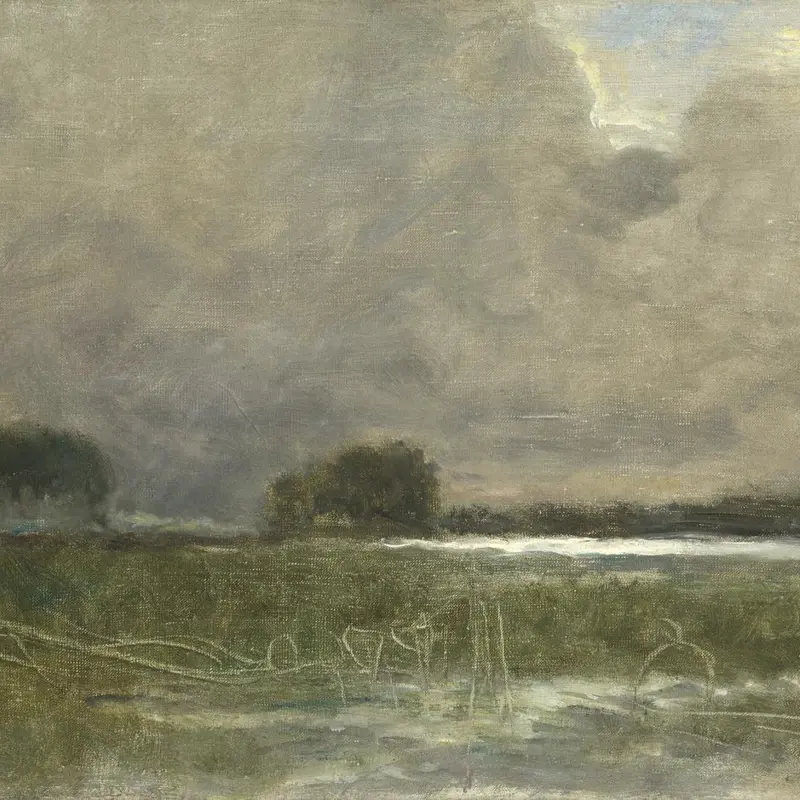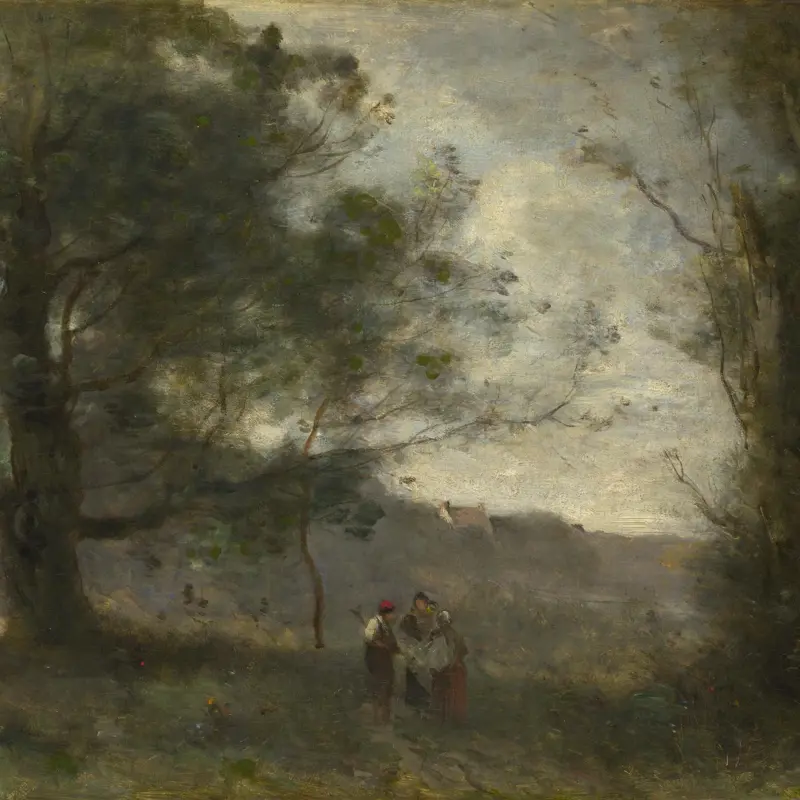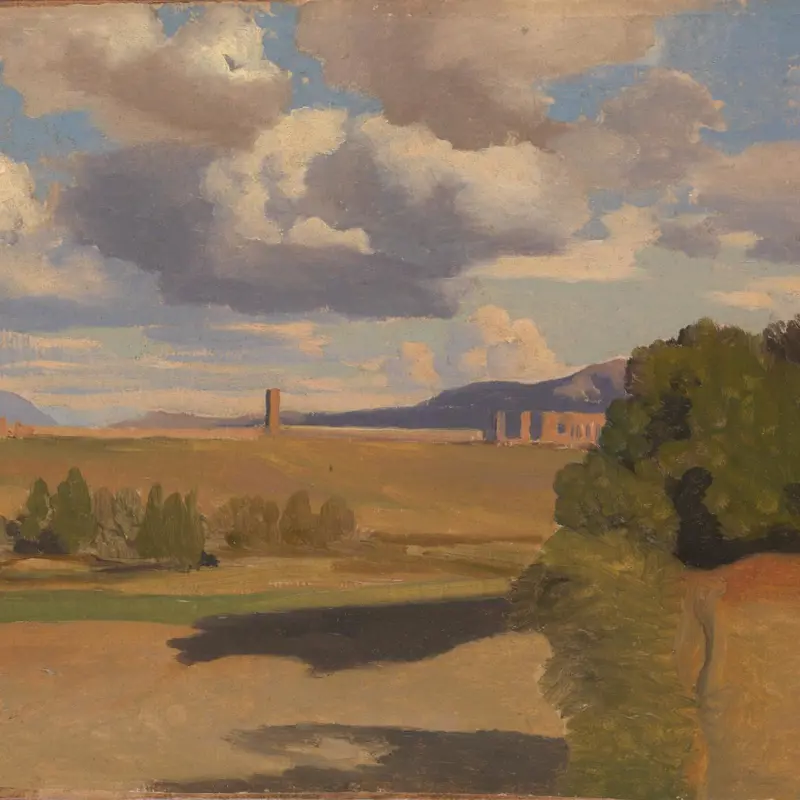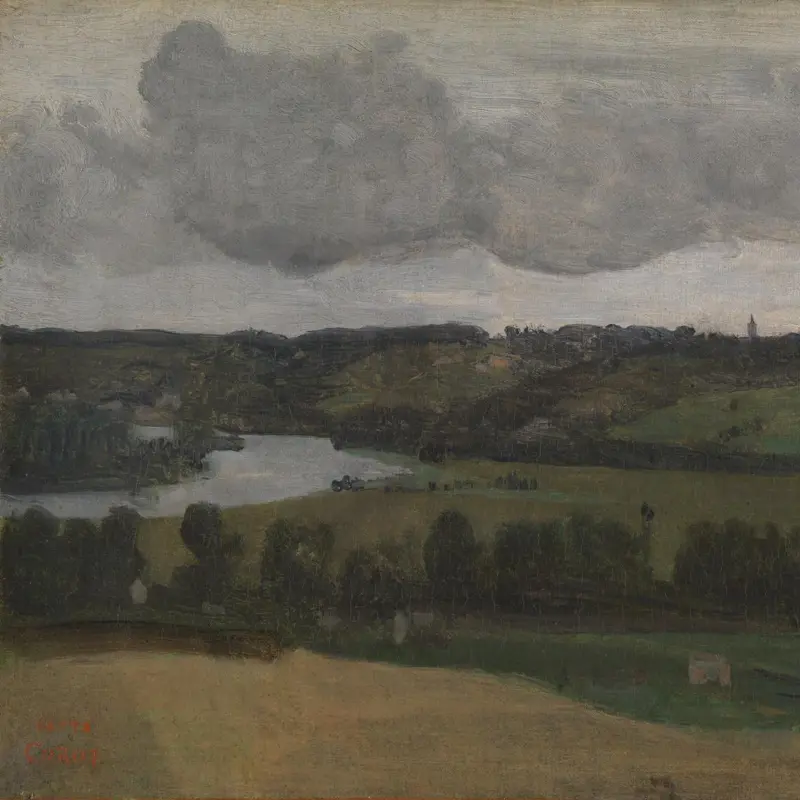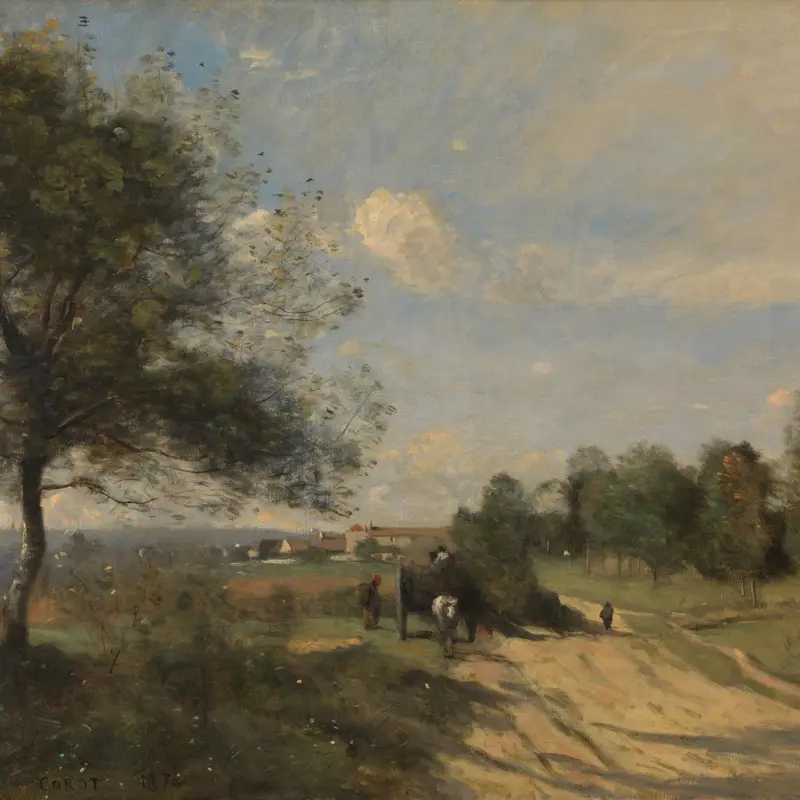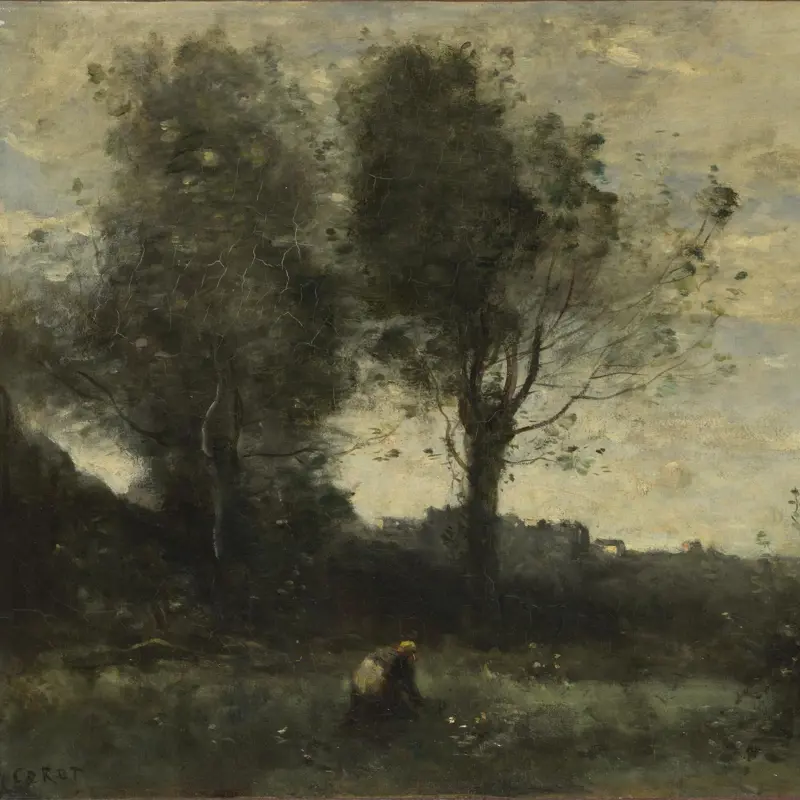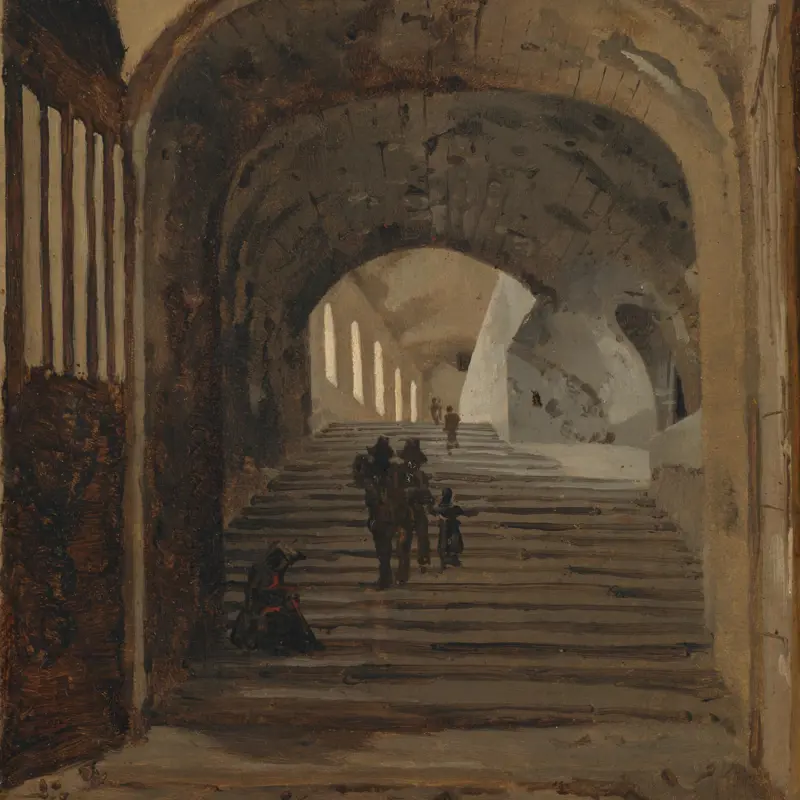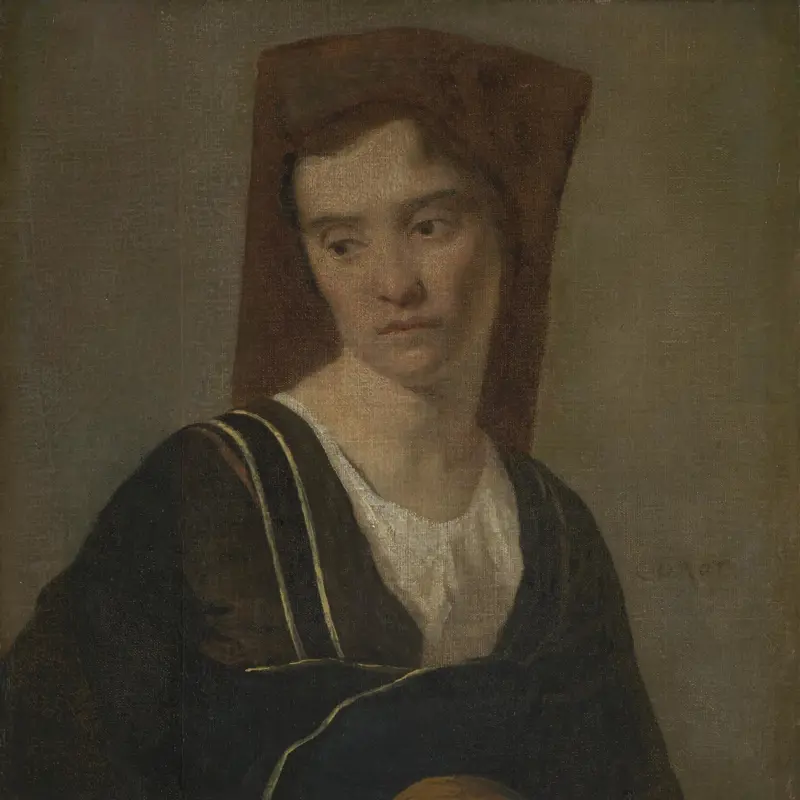Jean-Baptiste-Camille Corot, 'The Four Times of Day: Morning', about 1858
About the work
Overview
This is the first in a series of four panels illustrating the different times of day that Corot painted for his friend, fellow artist Alexandre-Gabriel Decamps. Two tall trees with full foliage on the left of the panel are offset by two smaller trees on the right. Corot’s use of trees on either side of the picture to create a vista framing the view beyond is a compositional device used by classical landscape painters, such as Claude.
Starting from a thin and sketchily applied brown underpaint, Corot built up the composition with thicker, more opaque paint, but much of the picture remains an almost monochrome brownish-green. The most intense colour is the band of cadmium yellow-orange on the horizon, which indicates the imminent emergence of the sun as dawn breaks. Corot shows that as the light increases so colour intensifies, and this idea unfolds further across the next two panels. The bonnet introduces a red highlight that recurs across the series.
Key facts
Details
- Full title
- The Four Times of Day: Morning
- Artist
- Jean-Baptiste-Camille Corot
- Artist dates
- 1796 - 1875
- Part of the series
- The Four Times of Day
- Date made
- About 1858
- Medium and support
- Oil on wood (probably cherry)
- Dimensions
- 142.2 × 72.3 cm
- Inscription summary
- Signed
- Acquisition credit
- Bought with the assistance of the Art Fund (with a contribution from The Wolfson Foundation), 2014
- Inventory number
- NG6651
- Location
- Room 40
- Collection
- Main Collection
- Frame
- 19th-century Replica Frame
Provenance
Additional information
Text extracted from the ‘Provenance’ section of the catalogue entry in Sarah Herring, ‘National Gallery Catalogues: The Nineteenth Century French Paintings’, vol. 1, ‘The Barbizon School’, London 2019; for further information, see the full catalogue entry.
Exhibition history
-
2009Corot to Monet: A Fresh Look at Landscape from the CollectionThe National Gallery (London)8 July 2009 - 20 September 2009
-
2016Painters' Paintings: From Freud to Van DyckThe National Gallery (London)23 June 2016 - 4 September 2016
Bibliography
-
2001
C. Baker and T. Henry, The National Gallery: Complete Illustrated Catalogue, London 2001
-
2012M. Hohn, 'Stimmungsräume Corots Wanddekorationen', in M. Stuffmann and D. Schäfer, Natur und Traum, Karlsruhe 2012
-
2015National Gallery, The National Gallery: Review of the Year, April 2014 - March 2015, London 2015
-
2019Herring, Sarah, National Gallery Catalogues: The Nineteenth Century French Paintings, 1, The Barbizon School, London 2019
Frame
This is a nineteenth-century replica Italian-style frame. It was made by Charles Ives of 156 Campden Hill Road, London, who worked at this address between 1915 and 1944. An exhibition label confirms that The Four Times of Day: Morning was already housed in this frame by 1934–5.
A wide scotia section is highlighted by a twisted-ribbon-and-leaf motif on the outer edge. This is followed by reverse moulding with carved flutes and spear designs. The frame is water-gilded, and on the lower corner of the scotia a black ink number (from 11 to 14) is written.
A photograph by Adolphe Augustus Boucher from 1895 shows Corot’s The Four Times of Day hanging in Frederic Leighton’s drawing room, in matching French neoclassical frames.
About this record
If you know more about this work or have spotted an error, please contact us. Please note that exhibition histories are listed from 2009 onwards. Bibliographies may not be complete; more comprehensive information is available in the National Gallery Library.
Images
About the series: The Four Times of Day
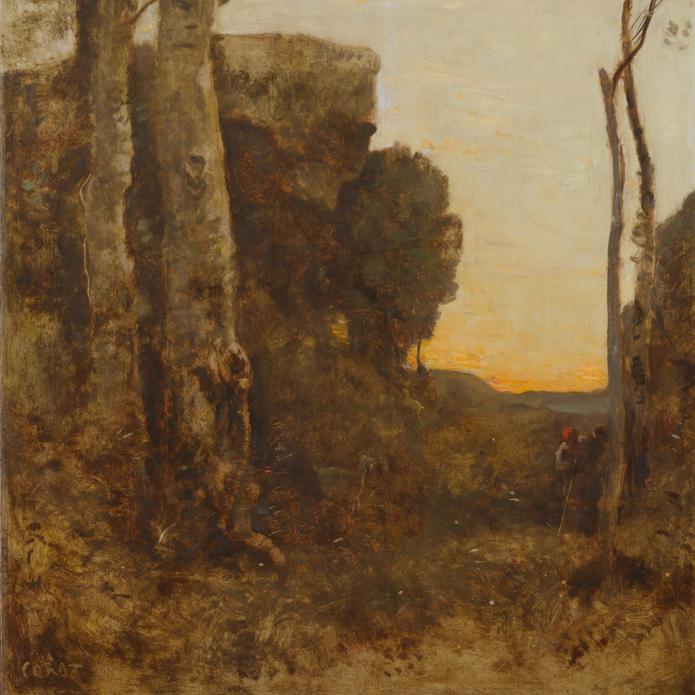
Overview
Corot painted these four wooden panels – Morning, Noon, Evening and Night – for his friend and fellow artist, Alexandre-Gabriel Decamps. The panels were to decorate the studio in the house Decamps had recently bought at Fontainebleau, a town southeast of Paris. Other artists, including Bonvin and Philippe Rousseau, were asked to produce paintings for the dining room.The Fontainebleau forest was a popular location for artists in the mid-nineteenth century, especially the area in and around the neighbouring village of Barbizon.
As with many of Corot’s paintings, this group combines aspects of the classical tradition of idealised landscape, as represented by the seventeenth-century French artist Claude, with the practice of sketching in oils outdoors. The series was completed in just one week, and the freshness of Corot’s brushwork particularly impressed Decamps. Corot’s technique was also admired by Impressionist painters such as Monet, who painted series showing different times of the day.

